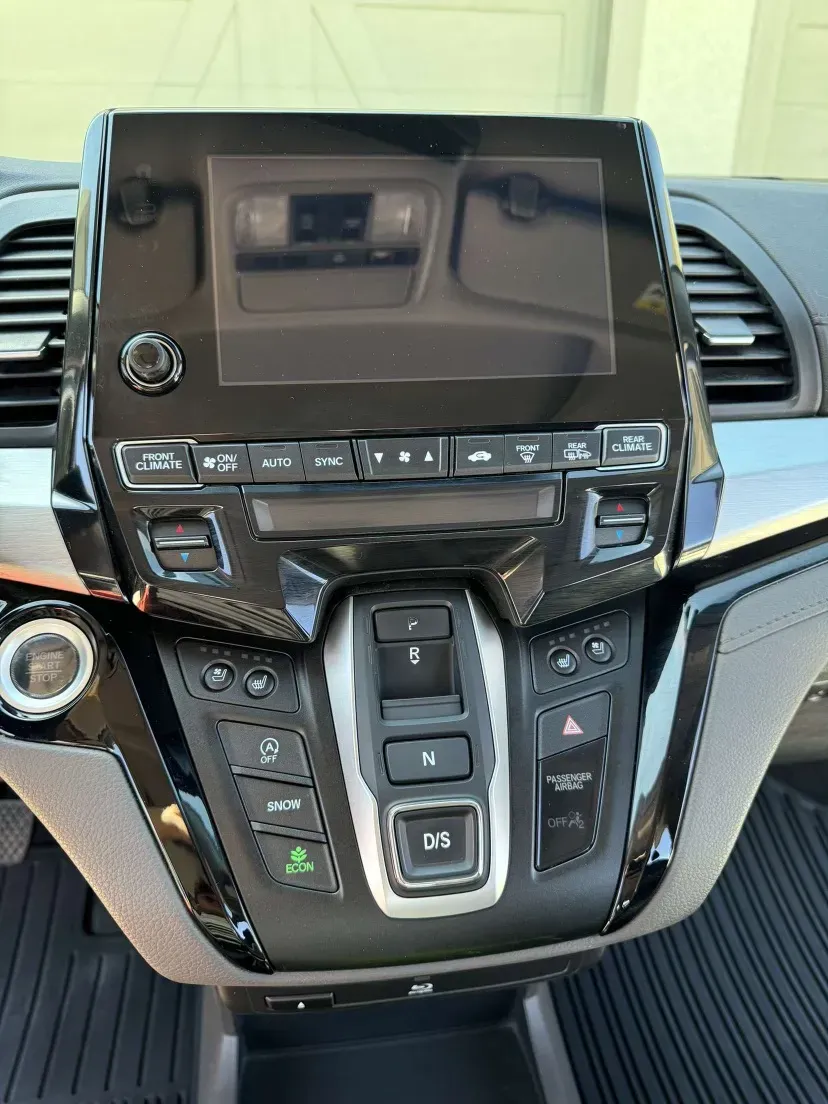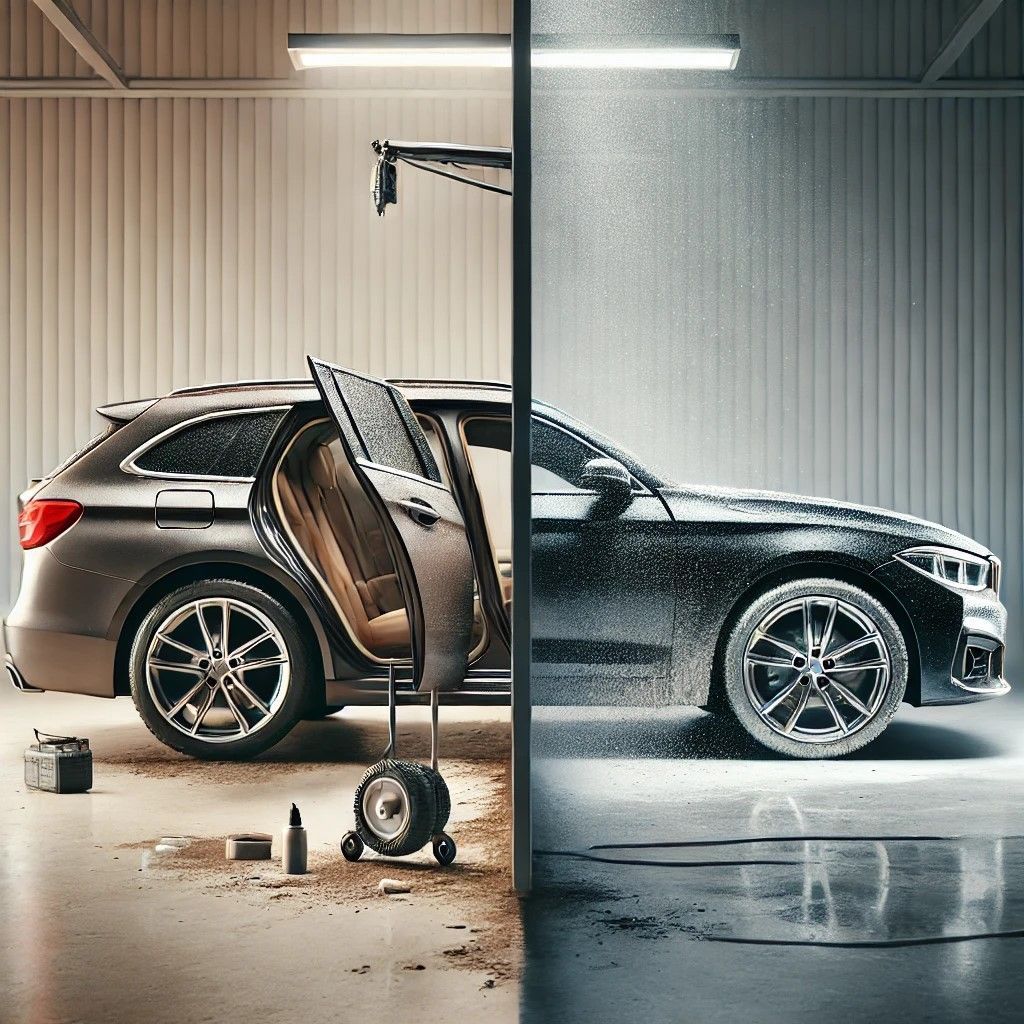Most Important Rules About Car Wax and Ceramic Coatings
Introduction
Maintaining the appearance and integrity of your vehicle’s paint is essential, not just for aesthetics but for its longevity as well. Over time, exposure to the elements like sun, rain, and dirt can take a toll. Fortunately, there are several protective measures you can take to keep your car looking its best. Among the most popular are car waxing, ceramic coating, and using sealants—each with its own set of benefits, maintenance requirements, and cost implications.
Car Waxing
A timeless method that offers a deep, glossy finish at a more affordable price point. It provides good protection against the elements, although it doesn’t last as long as other options.
Ceramic Coating
A newer, trendier choice. It offers extended durability—often lasting three years or more—but comes with a higher cost. It requires less frequent maintenance, usually just washes and occasional top-ups with a ceramic topper, although it's more susceptible to water spots. These spots, however, stay on the coating rather than damaging the clear coat of the paint itself.
For those with larger vehicles like SUVs, ceramic coatings might be more practical due to the effort involved in waxing large surfaces. Smaller cars, easier and quicker to wax, might not warrant the higher investment of ceramic treatments unless frequent, extensive use demands it.
Sealants
Are a happy medium by offering better protection and longer longevity than wax—lasting up to twice as long depending on environmental conditions—and are easier to apply. Sealants like GTechniq C2V3, which I have found effective, can last about two months in harsh climates like Florida's, but stretched to four or five months in milder settings like Indiana. It’s crucial, however, to buff them off before they dry to avoid streaks.
Choosing the right protection involves weighing the value of your vehicle, the cost of the treatment, and your personal time and effort. Whether it's for personal satisfaction or enhancing resale value, the right choice varies based on your vehicle’s usage, your budget, and how you engage with car care.
What is Car Waxing?
Car waxing is a traditional method that has stood the test of time, offering an effective way to protect your vehicle’s paint and enhance its appearance. It creates a barrier against environmental elements, which is crucial in places like Kansas where weather conditions can vary dramatically.
Types of Car Wax: Car waxes are available in various forms, including natural options like carnauba and synthetic blends. Carnauba wax is particularly favored for its ability to produce a deep, rich shine, ideal for those who love a show-worthy look.
Application Process: The process involves thoroughly cleaning the car's surface, applying the wax with a foam applicator or soft cloth, allowing it to dry to a haze, and then buffing it off with a microfiber towel. This not only enhances the vehicle’s look but also provides a protective layer.
Benefits of Car Waxing:
- Cost-effective: Wax is generally less expensive in terms of both the product and the application, making it accessible for all car owners.
- Enhanced Gloss: It provides a deep, rich gloss that significantly enhances the visual appeal of your car's paint.
- Protection: Although not as durable as ceramic coatings, wax offers decent protection against dirt, UV rays, and light contaminants, which can be particularly beneficial during Kansas’s varied weather conditions.
Considerations: The main drawback of waxing is its need for frequent application; it typically lasts between one to three months depending on environmental factors. For Kansas, with its hot summers and cold winters, car wax may degrade faster, requiring more regular maintenance. However, for those who enjoy the routine of detailing their car, or for smaller vehicles that are easier to manage, waxing can still be an excellent choice.
What is Ceramic Coating?
Ceramic coating represents a major advancement in protective car treatments, offering a long-lasting shield against various environmental hazards. This liquid polymer, when applied, forms a chemical bond with the vehicle's factory paint that is much stronger than what wax can provide, effectively becoming a part of the paint surface.
The Science Behind Ceramic Coating: Ceramic coatings are composed of silicon dioxide (silica), derived from natural materials such as quartz and sand. Some formulations might also include titanium dioxide, which adds further UV resistance and durability. When applied, this coating creates an incredibly hard surface that is both clear and resilient.
Application Process: The process of applying a ceramic coating is meticulous and typically handled by professionals. It starts with a thorough wash and paint correction to remove any imperfections that could affect the final appearance. The coating is then applied meticulously in a controlled environment to ensure even coverage. Once cured, it forms a solid bond that is much tougher than traditional waxes.
Benefits of Ceramic Coating:
- Durability: One of the most significant advantages of ceramic coating is its longevity. A properly applied coating can last anywhere from two to five years, depending on maintenance and environmental conditions.
- Protection: Ceramic coatings excel in protecting against stains, chemicals, UV rays, and water. They provide a hydrophobic surface that repels water and dirt, making cleaning easier and less frequent.
- Aesthetic Enhancement: While different from the deep gloss of wax, ceramic coatings give your car a striking, glass-like shine that enhances the color and clarity of the underlying paint.
Considerations: Despite its benefits, ceramic coating is more expensive than waxing and requires professional application. It's also more susceptible to water spots; though these spots remain on the coating and do not damage the paint directly, they require proper washing techniques to avoid. Given its durability and the level of protection it offers, ceramic coating is a superb choice for those who want a "fit and forget" solution, particularly for larger vehicles or those in areas with harsh weather conditions, like Kansas.
Ideal for Larger Vehicles: In regions like Kansas, where the climate can vary drastically, maintaining large vehicles like SUVs can be labor-intensive if relying solely on wax. Ceramic coating, by reducing the need for frequent upkeep, makes it easier to maintain larger vehicles. It’s particularly valuable for those who may find the process of waxing a larger vehicle too cumbersome or time-consuming.
Key Differences Between Car Waxing and Ceramic Coating
When deciding on the best protection for your vehicle, it's crucial to understand the fundamental differences between car wax and ceramic coating. These differences span various aspects including durability, protection, maintenance, cost, aesthetic impact, ease of application, and ideal use cases.
Durability: Ceramic coatings offer longer-lasting protection, typically spanning several years, making them ideal for Kansas’s variable weather conditions.
Protection: Car wax provides basic environmental protection and needs frequent reapplication, whereas ceramic coatings offer a superior shield against harsh elements and require less maintenance.
Maintenance: Wax needs reapplication every few months, whereas ceramic coatings remain effective with just routine cleaning and occasional top-ups.
Cost: Ceramic coating requires a higher upfront investment but proves more cost-effective over time due to its durability.
Aesthetic Impact: Wax enhances the vehicle with a classic deep gloss, while ceramic coating provides a vibrant, glass-like finish.
Ease of Application: Wax can be applied at home with minimal effort, whereas ceramic coating requires a professional application for optimal results.
Ideal Use Cases: Wax is great for those who enjoy regular detailing and have smaller vehicles. Ceramic coating is better suited for owners of larger vehicles or those looking for a more permanent, low-maintenance solution, especially useful in areas with frequent weather changes like Kansas.
| Feature | Car Wax | Ceramic Coating |
|---|---|---|
| Durability | Lasts 1-3 months | Lasts 2-5 years |
| Protection | Basic barrier against moisture, UV rays, and light contaminants | Superior shield against UV rays, chemical stains, and scratches |
| Maintenance | Requires frequent reapplication every few months | Low maintenance; routine washes and occasional ceramic top-ups |
| Cost | Lower initial cost, higher long-term cost due to frequent applications | Higher initial cost, lower long-term cost due to durability |
| Aesthetic Impact | Enhances paint with a deep, rich gloss | Produces a glass-like, vibrant appearance that enhances paint clarity |
| Ease of Application | Can be applied at home | Requires professional application |
| Ideal Use Cases | Ideal for enthusiasts who enjoy regular maintenance or those with smaller cars | Suitable for owners of larger vehicles or those seeking a more permanent solution |
Which is Right for You?
Deciding whether to choose car wax or ceramic coating depends on several factors including your budget, the value of your car, how long you plan to keep your vehicle, and your personal preferences for maintenance. Here’s a guide to help you determine which option is best suited for your needs:
If You Prefer Low Maintenance:
- Ceramic Coating: If you're someone who prefers to invest time and money upfront for longer-lasting results, ceramic coating is the ideal choice. It’s especially suitable if you have a busy lifestyle and prefer not to engage in frequent car maintenance. With ceramic coating, your vehicle maintains its luster with just routine cleaning and occasional top-ups.
If You Enjoy Regular Car Care:
- Car Wax: For car enthusiasts who find joy in the process of waxing and detailing their cars regularly, car wax is a satisfying choice. It allows for more frequent interaction with your car, and you can enjoy the immediate results of a freshly waxed shine.
If Cost is a Major Consideration:
- Car Wax: Initially, car wax is much more affordable than ceramic coating. It’s ideal for those on a budget or those who do not mind the periodic reapplication required to maintain protection and gloss.
- Ceramic Coating: Although more expensive upfront, ceramic coating can be cost-effective over time. If you plan to keep your car for many years, the long-term benefits of reduced maintenance can justify the initial higher investment.
If You Own a Larger Vehicle or SUV:
- Ceramic Coating: Larger vehicles require more effort and time to wax thoroughly. If you own an SUV or a large truck, especially in a place like Kansas where the weather can be harsh, you might prefer ceramic coating. It reduces the frequency and effort of maintenance and makes washing the vehicle easier and quicker.
If You Are Concerned About Environmental Impact:
- Ceramic Coating: By choosing ceramic coating, you reduce the frequency of washes and the use of chemicals on your car’s surface, which can be beneficial for the environment. Less frequent maintenance reduces the overall consumption of water and car care products.
If You Seek the Best Aesthetic:
- Car Wax: Wax is renowned for enhancing the depth and richness of your car’s paint, making it ideal for show cars or those who value a classic shiny finish.
- Ceramic Coating: For a more modern appearance, ceramic coating offers a sleek, glass-like finish that enhances the color and clarity of your paint, giving it a consistently clean look.
Conclusion
Choosing the right car paint protection is about balancing cost, convenience, appearance, and the level of care you're willing to invest. Whether you choose car wax or ceramic coating, each provides valuable benefits that can maintain and enhance the look and durability of your car’s exterior. Consider your personal preferences, your car’s needs, and your typical car use to make the best choice for your lifestyle.



Want to advertise your local business on our blog content?
Reach out to learn about partnering with us!
